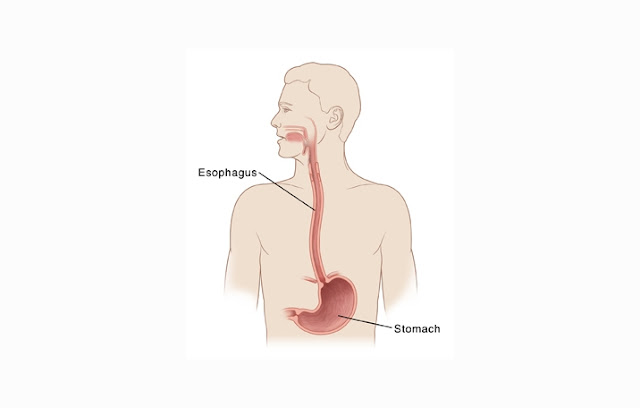A. UNDERSTANDING THE DEFINITIONS AND
FUNCTIONS OF ESOPHAGUS
The esophagus is part of the digestive system that
are located after phanrynx, before the stomach, and attaches to the trachea.
The word esophagus is derived from the Greek, "Oeso" which means
"bring" and "phagus" which means "eat". The
esophagus is a muscular tube that carries food from the mouth to the stomach.
Esophagus push food with a movement from the combination of muscle contractions
called peristalsis. The length of the esophagus in adults is about 23-25 cm and
a width about 2 cm.
The main function of the esophagus is to bring food,
liquids and saliva from the mouth to the stomach. Esophagus also rolling the
food by utilizing peristaltic movement.
Swallowing is the process of bringing food from the
mouth to the stomach by a combination of muscle and reflex movements of the
three organs of the digestive tract including the esophagus. Here are the
phases of swallowing in humans:
- Oral phase, the food is chewed in the mouth will be pushed to the back of the pharynx with tongue muscle movement.
- Pharyngeal phase, the entry of food stimulates the uvula to close the nasal cavity and epiglottis closes the respiratory tract so that food does not go in there. Then the food past the epiglottis, into the bottom of pharynx and towards the esophagus.
- Esophageal phase, entry of food to the esophageal sphincter stimulates peristalsis that will bring food to the stomach and enters the stomach. Then the food will be digested and stored temporarily in the stomach.
B. STRUCTURE OF ESOPHAGUS
The esophagus has the same structure as other
digestive organs such as the intestines and stomach. The esophagus composed by
four walls of (From outside to inside):
1. Serous
Layer
The outermost layer is composed of blood vessels,
lymphatics and nerves. Serous layer of the esophagus is in the form of
connective tissue. Serous layer has small cavities where the discharge of
serous fluid issued, this fluid serves as a lubricant for muscle movement.
2. Muscle
Layer
Muscle layer of the esophagus is a layer of smooth
muscle that works involuntary. There are two types of muscle fibers, the longitudinal
muscle fibers (lengthwise) and circular muscle fibers (circular). The
combination of both types of muscle contraction will produce intestinal
peristalsis which serves to break down the food and took it to the next
digestive organ.
3. Submucosa
Layer
Layer that composed by connective tissue containing
blood vessels, lymphatics, nerves and mucous glands. The blood vessels in the
submucosal layer of the esophagus plays an important role in passing the food
and nutrition.
4. mucosa
Layer
Prepared by the mucosal stratified squamous
epithelial cells and thin connective tissue. The mucosal layer had goblet cells
that can produce mucus. Under normal circumstances, the esophagus is not
resistant to stomach acid so it will feel like pain / burning during an
abnormal rise of stomach acid into the esophagus mucosa.




